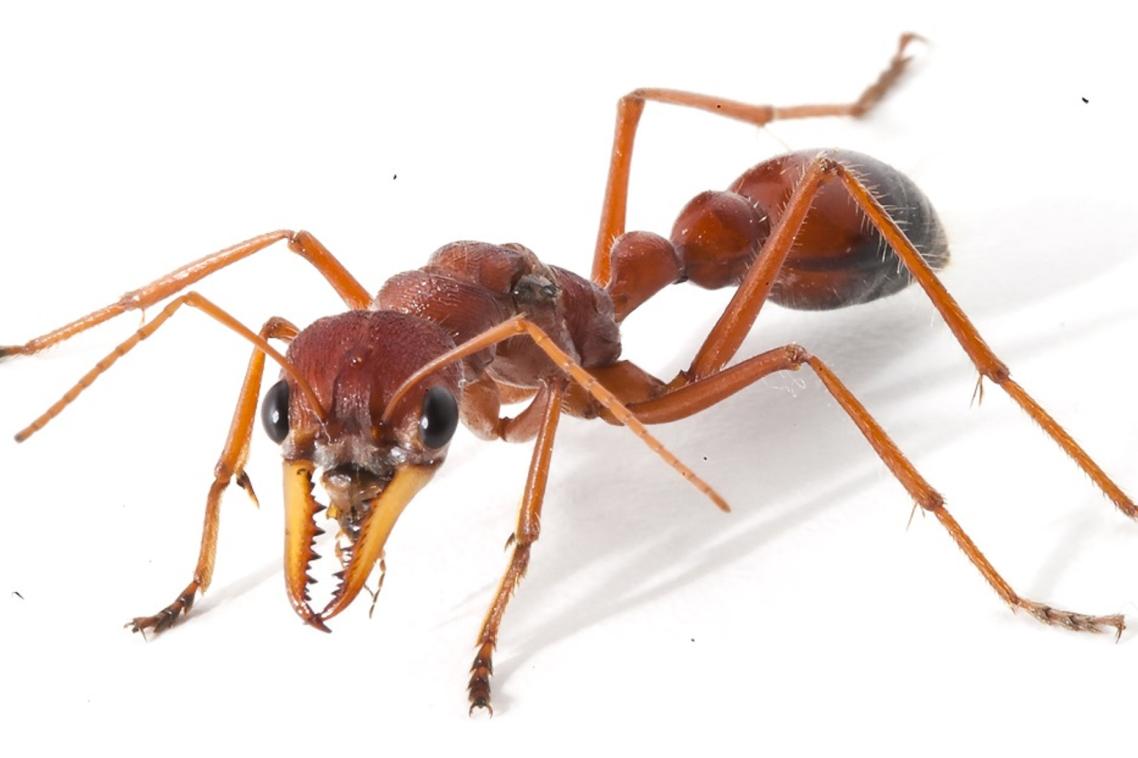Bull ant venom could put the bite on pain

Venom from the giant red bull ant is helping University of Queensland scientists understand the evolution of animal toxins in work that could lead to better treatments for pain.
Researchers from UQ’s Centre for Advanced Imaging and Institute for Molecular Bioscience have completed the first comprehensive study of ant venom, revealing toxins that stimulate the human nervous system to cause pain.
Dr Eivind Undheim said the venom of bees and wasps had been a subject of research for some decades, but there had been little research on ant venom.
“Ants are found on every inhabited continent on Earth, and many of us are familiar with the sting their venom can produce,” he said.
“But, despite the ubiquity of ants, analysing their venom has been neglected by researchers, likely due to ants’ relatively small size and venom yield, and also to the widespread misconception that they produce a simple acidic venom.
“Our study revealed that the venom of the giant red bull ant is composed of a suite of peptide toxins, and that these are closely related to those found in the venoms of bees and wasps.
“This discovery suggests these toxins evolved from a common ancestor gene found across the Aculeata, or “stinging wasps” part of the Hymenoptera order, which includes ants, bees, wasps and sawflies.”
The giant red bull ants – Myrmecia gulosa – an Australian species with a notoriously painful sting, were collected from a single colony near the Queensland capital, Brisbane.
UQ’s Dr Samuel Robinson said revealing the chemistry behind animal stings could improve understanding of pain physiology and contribute to the development of new pain treatments.
“Venoms are complex mixtures of molecules that animals use to subjugate prey and defend themselves against predators,” he said.
“Defensive stings in particular are usually intensely painful, and contain toxins that directly target our pain-sensing neurons.
“That means we can use animal venoms to study the human nervous system and learn more about how pain travels through the body and how to develop compounds that block it.”
The study, published in Science Advances, was supported by the Australian Research Council and National Health and Medical Research Council of Australia.
Topics
Related articles

Should you consent to your doctor using an AI scribe? Here’s what you should know.

Thousands of Queensland reef photos lead to worldwide change
Media contact
UQ Communications
communications@uq.edu.au
+61 429 056 139
